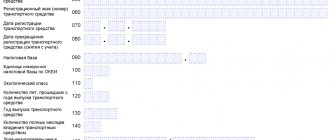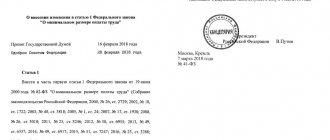Home / Labor Law / Payment and Benefits / Pension
Back
Published: March 27, 2016
Reading time: 11 min
5
17010
A number of regions of Russia are characterized by difficult climatic and other conditions associated with increased health hazards, as well as a high cost of living due to natural reasons. For this reason, various measures to support the population are applied at the local and regional level, aimed at equalizing income and maintaining material equality.
One of these tools is the use of regional coefficients, which are established at the level of the Government of the Russian Federation.
- Concept and determining factors
- What payments are subject to the regional coefficient?
- Regional coefficients in the Russian Federation in 2021
- How is the district coefficient used in calculations?
What payments are affected by the regional coefficient?
The regional coefficient affects the following payments:
- Minimum wage and all payments using it
- Wages (salary and other income from work)
- Additional payment to wages (bonuses, allowances, additional payments for qualifications, for length of service, compensation)
- Additional pay for work in hazardous conditions (after a special assessment of working conditions)
- Sick leave payment for temporary disability
- Payment for seasonal workers, part-time workers, employees on a flexible schedule or part-time schedule
- Pension payments
- Other transfers received by an employee on the basis of an employment or collective agreement
Indexation of the above payments is valid as long as the person lives in this region. When you change your place of residence, the regional coefficient also changes.
If the regional coefficient affects the employee’s pay. It must be written into the employment contract as an essential condition.
How to calculate payments taking into account the Republic of Kazakhstan
The district coefficient increases the size of the financial payment by a certain percentage. The accounting department calculates payments according to the usual scheme valid for the entire country, and then multiplies the resulting figures by its regional coefficient.
If an employer finds it difficult to determine the size of this indicator, he should contact the regional Labor Inspectorate, which has all the information on this issue, because compliance with this legislative norm is mandatory for all entrepreneurs. On their official website and other information resources you can see a table containing a list of “special” regions of the Russian Federation with the corresponding financial ratios.
What code is used in the 2-NDFL certificate to indicate the percentage premium and regional coefficient accrued to bonuses for production results?
What payments are not covered?
The regional coefficient does not affect payments that are calculated on the basis of amounts that already contain it:
- Vacation payments - calculated on the basis of salary, which already includes a coefficient
- One-time financial assistance - the accrual rules are not specified in the employment contract or other internal regulations
- Bonuses paid periodically
- Travel allowances if an employee travels to a region where the regional coefficient is not taken into account
- Northern allowance is an additional charge for activities in difficult conditions. Regional coefficient and northern surcharge are different surcharges
When not applicable
The regional coefficient does not apply if earnings are calculated based on amounts in which this multiplier is already taken into account. These are the following payments:
- vacation pay, since they are calculated on the basis of the full salary, and that, in turn, is calculated taking into account regional allowances;
- financial assistance if it is paid one-time and not on an ongoing basis, and the accrual rules are not specified in the collective agreement;
- periodic bonuses;
- travel expenses if the trip is to a region for which a regional coefficient has not been established;
- when calculating the “northern” bonus, since a separate increasing indicator is provided for work in the Far North, increasing the same income group of employees involved in such conditions.
Regional coefficient by regions of Russia
Regional coefficients for regions of Russia in 2021.
Table 1. Regional coefficients by region
| № | Region | Coefficient |
| 1 | Republic of Adygea | Indefined |
| 2 | Altai Republic | 1,4 |
| 3 | Republic of Bashkortostan | 1,15 |
| 4 | Republic of Buryatia, entire territory | 1,2 |
| Barguzinsky, Kurumkansky, Okinsky districts | 1,3 | |
| Bauntovsky, Muisky, Severobaikalsky districts, Severobaikalsk | 1,7 | |
| 5 | Republic of Dagestan, place of residence at an altitude of 1500-2000 meters above the sea | 1,15 |
| place of residence at an altitude of 2000-3000 meters above the sea | 1,2 | |
| 6 | The Republic of Ingushetia | Indefined |
| 7 | Kabardino-Balkarian Republic | Indefined |
| 8 | Republic of Kalmykia (the territory is divided into many zones with their own coefficient. If a settlement within the zone has a supply of drinking water, then the coefficient there decreases by 0.1) | 1,1 — 1,3 |
| 9 | Karachay-Cherkess Republic | Indefined |
| 10 | Republic of Karelia | Indefined |
| Kondopoga, Pitkyaranta, Prionezhsky, Pryazhinsky, Suoyarvsky, Lakhdenpokhsky, Olonetsky districts, the cities of Petrozavodsk, Sortavala | 1,15 | |
| Medvezhyegorsky, Muezersky, Pudozhsky, Segezhsky districts | 1,3 | |
| Belomorsky, Kalevalsky, Kemsky, Loukhsky districts, Kostomuksha | 1,4 | |
| 11 | Komi Republic | Indefined |
| Knyazhnogorsky, Kortkorossky, Sysolsky, Syktyvdinsky, Priluzsky, Ust-Vymsky, Ust-Kulomsky, Koygorodsky districts, Syktyvkar | 1,2 | |
| Pechora, Sosnogorsk, Izhemsky, Ust-Tsilemsky, Troitsko-Pechorsky, Udora districts | 1,3 | |
| Vuktyl district, Vuktyl city | 1,4 | |
| Usinsky district, Inta cities, Usinsk | 1,5 | |
| Vorkuta | 1,6 | |
| 12 | Mari El Republic | Indefined |
| 13 | The Republic of Mordovia | Indefined |
| 14 | The Republic of Sakha (Yakutia) | Indefined |
| areas located up to the Arctic Circle, south of 65 degrees. northern latitude | 1,7 | |
| areas located beyond the Arctic Circle, at least 65° north latitude | 2 | |
| Locations of diamond mining enterprises | 2 | |
| 15 | Republic of North Ossetia Alania | Indefined |
| 16 | Republic of Tatarstan | Indefined |
| 17 | Republic of Tyva, entire territory | 1,4 |
| Mongun-Taiginsky, Tozhinsky, Kyzylsky (territory of Shynaan Rural Administration) districts | 1,5 | |
| 18 | Udmurt republic | 1,15 |
| 19 | The Republic of Khakassia | 1,3 |
| 20 | Chechen Republic | Indefined |
| 21 | Chuvash Republic – Chuvashia | Indefined |
| 22 | Altai Territory, entire territory | 1,15 |
| Aleysky, Baevsky, Blagoveshchensky, Burlinsky, Volchikhinsky, Egorievsky, Zavyalovsky, Klyuchevsky, Kulundinsky, Mamontovsky, Mikhailovsky, German, Novichikhinsky, Pankrushikhinsky, Pospelikhinsky, Rodinsky, Romanovsky, Rubtsovsky, Slavgorodsky, Suetsky, Tabunsky, Uglovsky, Khabarovsky, Shipunovsky districts, cities regional subordination Aleysk, Slavgorod, Yarovoye | 1,25 | |
| 23 | Krasnodar region | Indefined |
| 24 | Krasnoyarsk Territory, entire territory | 1,3 |
| Kezhemsky district | 1,6 | |
| Norilsk and settlements subordinate to its Administration | 1,8 | |
| 25 | Primorsky Krai, entire territory | 1,3 |
| settlements of the Taezhny and Ternisty mines in the Krasnoarmeysky district | 1,4 | |
| 26 | Stavropol region | Indefined |
| 27 | Khabarovsk region | Indefined |
| Khabarovsk, Bikinsky, Vyazemsky, named after Lazo, Nanaisky districts, Khabarovsk | 1,3 | |
| Ayano-Maysky, Tuguro-Chumikansky, Nikolaevsky, named after Polina Osipenko, Komsomolsky, Sovetsko-Gavansky, Vaninsky, Solnechny, Amursky, Verkhnebureinsky, Ulchsky districts, Komsomolsk-on-Amur | 1,5 | |
| Okhotsk region | 1,7 | |
| 28 | Amur region | Indefined |
| Arkharinsky, Belogorsky, Blagoveshchensky, Bureya, Zavitinsky, Ivanovsky, Konstantinovsky, Mazanovsky, Mikhailovsky, Oktyabrsky, Romnensky, Svobodnensky, Seryshevsky, Tambov districts, the cities of Blagoveshchensk, Belogorsk, Raichikhinsk, Svobodny | 1,3 | |
| Magdachinsky, Shimanovsky districts, Shimanovsk | 1,4 | |
| Skovorodinsky district | 1,5 | |
| Zeya, Selemdzhinsky, Tynda districts, cities of Zeya, Tynda | 1,7 | |
| 29 | Arkhangelsk region, entire territory | 1,2 |
| Leshukovsky, Pinezhsky districts | 1,4 | |
| 30 | Astrakhan region (applied depending on the degree of desert and waterlessness of the area) | 1,1 — 1,35 |
| 31 | Belgorod region | Indefined |
| 32 | Bryansk region | Indefined |
| 33 | Vladimir region | Indefined |
| 34 | Volgograd region | Indefined |
| 35 | Vologda Region | Indefined |
| Babaevsky, Vologda, Gryazovets, Kaduysky, Mezhdurechensky, Sokolsky, Ustyuzhensky, Chagodoshchensky, Cherepovets, Sheksninsky districts, Vologda | 1,15 | |
| Cherepovets with the territory subordinate to the city Council of People's Deputies | 1,25 | |
| 36 | Voronezh region | Indefined |
| 37 | Ivanovo region | Indefined |
| 38 | Irkutsk region | Indefined |
| throughout the entire territory (with the exception of the city of Angarsk, the city of Cheremkhovo and the Cheremkhovo district, the city of Tulun and the Tulunsky district and employees of the Eastern Railway, for which decisions of the regional executive committee and resolutions of the Head of Administration were adopted) | 1,3 | |
| Bratsky district, Bratsk | 1,4 | |
| Ust-Ilimsky, Nizhneilimsky districts, Ust-Ilimsk | 1,6 | |
| Ust-Kutsky district | 1,7 | |
| 39 | Kaliningrad region | Indefined |
| 40 | Kaluga region | Indefined |
| 41 | Kamchatka region, entire territory | 1,8 |
| Commander Islands | 2 | |
| 42 | Kemerovo region | 1,3 |
| 43 | Kirov region | Indefined |
| Afanasyevsky, Belokholunitsky, Bogorodsky, Verkhnekamsky, Darovsky, Zuevsky, Kirovo-Chepetsky, Kamensky, Luzsky, Murashinsky, Omutninsky, Nagorsky, Oparinsky, Podosinovsky, Slobodskoy, Uninsky, Felensky, Khalturinsky, Yuryansky districts, Kirov with the territory subordinate to the city Council of People's Deputies | 1,15 | |
| 44 | Kostroma Region (applies to wages of employees of logging, timber floating, timber transshipment enterprises, organizations and chemical forestry enterprises) | 1,15 |
| 45 | Kurgan region | 1,15 |
| 46 | Kursk region | Indefined |
| 47 | Leningrad region | Indefined |
| 48 | Lipetsk region | Indefined |
| 49 | Magadan Region | 1,7 |
| 50 | Moscow region | Indefined |
| 51 | Murmansk region, entire territory | 1,5 |
| village Fog | 1,7 | |
| Murmansk-140 | 1,8 | |
| 52 | Nizhny Novgorod Region | Indefined |
| 53 | Novgorod region | Indefined |
| 54 | Novosibirsk region | 1,25 |
| 55 | Omsk region | 1,15 |
| 56 | Orenburg region | 1,15 |
| 57 | Oryol Region | Indefined |
| 58 | Penza region | Indefined |
| 59 | Perm region, entire territory | 1,15 |
| Krasnovishersky, Cherdynsky districts | 1,2 | |
| 60 | Pskov region | Indefined |
| 61 | Rostov region | 1,1 |
| Zavetinsky, Remontnensky districts; Dubovsky, Zimovnikovsky, Orlovsky, Proletarsky districts, bounded from the west by the line of the Salsk - Volgograd railway, from the north by the border with the Volgograd region, from the east, northeast and south - by the border with the Republic of Kalmykia (in the regional centers of the village of Dubovskoye, the village of Zimovniki, the village . Orlovsky and Proletarsk, the coefficient does not apply) | ||
| 62 | Ryazan Oblast | Indefined |
| 63 | Samara Region | Indefined |
| 64 | Saratov region | Indefined |
| 65 | Sakhalin region | Indefined |
| Aleksandrovsk-Sakhalinsky, Anivsky, Dolinsky, Korsakovsky, Makarovsky, Nevelsky, Poronaisky, Smirnykhovsky, Tomarinsky, Tymovsky, Uglegorsky, Kholmsky districts, Yuzhno-Sakhalinsk | 1,6 | |
| Nogliki, Okha districts | 1,8 | |
| Kuril, North Kuril and South Kuril regions | 2 | |
| 66 | Sverdlovsk region | 1,15 |
| Garinsky, Taborinsky districts, in territories under the Administrative subordination of Ivdelsky, Karpinsky, Krasnoturinsky and Severouralsky city councils (including cities) | 1,2 | |
| 67 | Smolensk region | Indefined |
| 68 | Tambov Region | Indefined |
| 69 | Tver region | Indefined |
| 70 | Tomsk region | Indefined |
| Bakcharsky, Krivosheinsky, Molchanovsky, Teguldetsky districts | 1,3 | |
| Alexandrovsky, Verkhneketsky, Kargasoksky, Kolpashevo, Parabelsky, Chainsky districts, cities of Kedrovy, Kolpashevo, Strezhevoy | 1,5 | |
| Oil and gas industry enterprises located north of 60 degrees north. latitude | 1,7 | |
| 71 | Tula region | Indefined |
| 72 | Tyumen region, entire territory | 1,15 |
| Uvatsky district | 1,5 | |
| Tobolsk, Vagai districts, Tobolsk | 1,217 | |
| 73 | Ulyanovsk region | Indefined |
| 74 | Chelyabinsk region | 1,15 |
| 75 | Chita region, entire territory | 1,4 |
| Tungokochensky, Chernyshevsky, Tungiro-Olekminsky, Mogochinsky districts | 1,5 | |
| Kalarsky district | 1,7 | |
| 76 | Yaroslavl region | Indefined |
| 77 | Moscow | Indefined |
| 78 | Saint Petersburg | Indefined |
| 79 | Jewish Autonomous Region | 1,3 |
| 80 | Aginsky Buryat Autonomous Okrug | 1,4 |
| 81 | Komi-Permyak Autonomous Okrug, entire territory | 1,15 |
| Gaininsky district, Kochevsky, Kosinsky districts | 1,2 | |
| 82 | Koryak Autonomous Okrug, entire territory | 1,6 |
| For construction workers | 1,8 | |
| For forestry workers | 2 | |
| 83 | Nenets Autonomous Okrug | 1,8 |
| 84 | Taimyr (Dolgano-Nenets) Autonomous Okrug | 1,8 |
| 85 | Ust-Ordynsky Buryat Autonomous Okrug | 1,3 |
| 86 | Khanty-Mansiysk Autonomous Okrug - Ugra | 1,7 |
| 87 | Chukotka Autonomous Okrug | 2 |
| 88 | Evenki Autonomous Okrug | Indefined |
| Baykitsky, Tungusko-Chunsky districts | 1,5 | |
| Ilimpiysky district | 1,6 | |
| 89 | Yamalo-Nenets Autonomous Okrug, north of the Arctic Circle | 1,8 |
| South of the Arctic Circle | 1,7 |
What is the northern allowance
The northern allowance is paid to persons who work in the Far North and equivalent territories. Its application is provided for by the provisions of the Labor Code of the Russian Federation.
It is calculated as a percentage of wages in the established amount without taking into account the regional coefficient. The value can range from 30% to 100%.
The difference with the regional coefficient is that its size is influenced by the category assigned to the region, the duration of work in a given territory, and the age of the employee. In this case, the percentage can add up gradually.
There are also allowances for the salaries of young professionals. The condition for its payment is residence in this region for at least one year. Then the surcharge increases every year.
How coefficients are used (example)
Let's assume that a citizen lives and works in the Tyumen region, respectively, the regional coefficient is 1.15. If the salary is 45,000 rubles, and the regular bonus is 15,000 rubles. Then the salary is calculated according to the formula: (salary + bonus) × regional coefficient = (45,000 + 15,000) × 1.15 = 69,000 rubles.
If a bonus of 15,000 rubles was received, in the form of a one-time bonus or financial assistance (from an organization) in connection with the birth of a baby. Then the regional coefficient would apply only to salary. The salary would be: salary × regional coefficient + financial assistance = 45,000 × 1.15 + 15,000 = 66,750 rubles.
Calculation example
Let's look at how RCs are used in practice. Let's assume that a university has branches in different regions of Russia. Professors have a salary of 70,000 rubles. However, their income will differ depending on where the branch is located:
- in Karelia = 70,000 × 1.2 = 84,000 rubles;
- in the Amur region = 70,000 × 1.3 = 91,000 rubles;
- in the Magadan region = 70,000 × 1.7 = 119,000 rubles;
- on the Commander Islands of the Kamchatka Territory = 70,000 × 2.0 = 140,000 rubles.
This is how the earnings of professors who perform the same work, but in different climatic conditions, vary.
Errors when calculating payments
The most important mistake an accountant makes when calculating the minimum wage is the fact that the final salary is compared with the minimum wage after applying the coefficient. It is necessary that the salary be no less than the minimum wage, and only after that a regional coefficient should be applied to the salary.
It is also necessary to use this indicator for the size of permanent bonuses, including annual ones. An accountant can only apply the coefficient to the salary amount.
The coefficient does not apply to one-time bonuses that are not included in the wage system, as well as to amounts of financial assistance. They must be paid in the amount actually accrued.
Also, the coefficient does not need to be used for the amount of payments obtained by determining average earnings, since they were initially calculated on the basis of data that already included the regional coefficient. For example, when calculating vacation pay, you do not need to increase the resulting indicator by a factor again.









